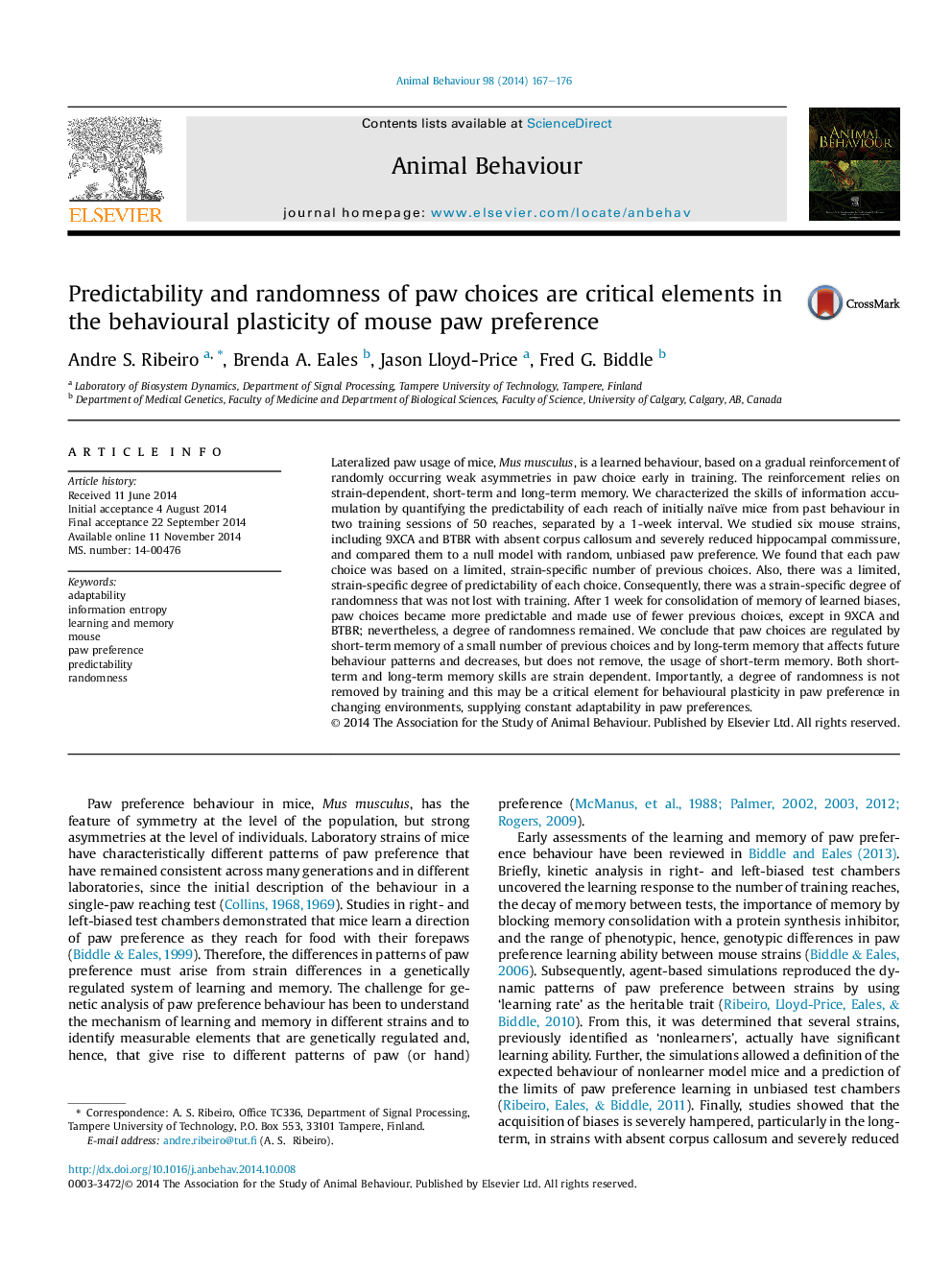| Article ID | Journal | Published Year | Pages | File Type |
|---|---|---|---|---|
| 2416338 | Animal Behaviour | 2014 | 10 Pages |
•Mice store information on paw choices, making subsequent choices more predictable.•Long-term memory enhances predictability, reducing previous choices used in decisions.•Predictability of choice is positively correlated with degree of behavioural change.•Predictability and degree of randomness not removed by training are strain-dependent.•Randomness not removed by training explains adaptability to changing environments.
Lateralized paw usage of mice, Mus musculus, is a learned behaviour, based on a gradual reinforcement of randomly occurring weak asymmetries in paw choice early in training. The reinforcement relies on strain-dependent, short-term and long-term memory. We characterized the skills of information accumulation by quantifying the predictability of each reach of initially naïve mice from past behaviour in two training sessions of 50 reaches, separated by a 1-week interval. We studied six mouse strains, including 9XCA and BTBR with absent corpus callosum and severely reduced hippocampal commissure, and compared them to a null model with random, unbiased paw preference. We found that each paw choice was based on a limited, strain-specific number of previous choices. Also, there was a limited, strain-specific degree of predictability of each choice. Consequently, there was a strain-specific degree of randomness that was not lost with training. After 1 week for consolidation of memory of learned biases, paw choices became more predictable and made use of fewer previous choices, except in 9XCA and BTBR; nevertheless, a degree of randomness remained. We conclude that paw choices are regulated by short-term memory of a small number of previous choices and by long-term memory that affects future behaviour patterns and decreases, but does not remove, the usage of short-term memory. Both short-term and long-term memory skills are strain dependent. Importantly, a degree of randomness is not removed by training and this may be a critical element for behavioural plasticity in paw preference in changing environments, supplying constant adaptability in paw preferences.
